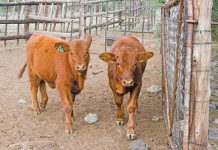Melons come in many colours, shapes tastes and sizes. We tend to be rather conservative and stick to what we know, and most consumers have never seen the varieties which are popular in some other countries.
Our musk melons are called spanspek and the name apparently originates from the 19th century when Juanna, the Spanish wife of the then governor of the Cape, Sir Harry Smith, preferred melon for breakfast instead of traditional bacon. Their Cape coloured servants referred to these melons as Spaanse spek, which then became spanspek.
South Africans prefer the netted melon with orange or salmon flesh and a beige rind. Traditionally, these melons are divided into two groups by the Americans, who are foremost in developing them. There are the Eastern melons, grown in the moister parts of the continent where disease is more of a threat, and the western shipper type, grown in the drier west of the US. The western shippers are generally of a higher quality as selections can be made without the restraint of including a wider disease package.
The Eastern melons must have resistance or tolerance to prevalent alternaria, anthracnose and downy mildew, as well as good resistance to fusarium, which is more active in wet conditions. Nowadays, the two types are often crossed.
Western shippers can be grown in the Western Cape or in the north in dry areas. In trials on the Highveld, western shippers usually fail dismally, whereas Eastern melons can work depending on the climatic conditions of the year. Melons are therefore commercially grown in warmer, drier parts of the country.
Some other differences include the attachment of the peduncle (stem) to the fruit. At maturity, most of our musk melons can be pulled off the stem, which is an easy way to determinate ripeness (called slip ripening). Breeders may suggest harvesting at early or full slip, depending on the characteristics of the variety. In Japan, similar varieties don’t slip ripen as they’re trellised and vulnerable to falling to the ground if they slip ripen, so pruning and fruit thinning is practised.
As the melons are grown under protection in identical conditions, the ripeness can be physically determined on one fruit and the harvesting for all determined from a small sample. These varieties tend to have much less of a musk flavour and are very sweet. Their prices are positively obscene by our standards. – Bill Kerr ((016) 366 0616 or e-mail [email protected]). |fw








